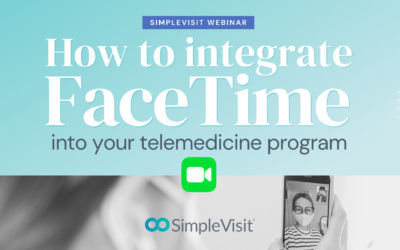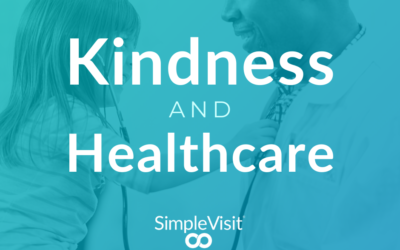Execute Video Visits with Excellence
By Allie Clark | 8 min read | July 25, 2019
[Part 1 of 3] Learning the Language of Telehealth
There is a foundation for healthcare that transcends any specific medical field, location or tools used for care. That foundation is hope.
Hope in better outcomes for a patient’s health by catching concerns before they become crises. Hope in a call for medical practice that acts as wellcare, not just sickcare. Hope in innovation that combats worry in the face of an uncertain future. Hope in creating a reality of longevity without the fear of pain or illness. This kind of hope is the motivator for the many trained healthcare providers around the world. It is the language spoken at the point of care.
Telemedicine — generally labeled as the practice of remote care — becomes another tool for providers to communicate this language of hope. The use of telemedicine technology does not change or minimize the message in and of itself. When used appropriately, telemedicine enhances the delivery of care with increased accessibility and feelings of personal attention and privacy.
Like any language not natively spoken, providers have to learn how to do telehealth well to communicate that message of hope. Taking our cues from experts in second language acquisition, we will lay out best practices for how to prepare yourself and your practice to become fluent in telehealth.
There are three basic stages to learning a second language:
- Understanding (Input)
- Producing (Output)
- Identifying & Correcting Errors (Feedback)
We will use these stages as a framework for this discussion on learning how to create and perfect the experience of telehealth for you and your patient.
Stage 1: Understanding
The first stage is acquiring comprehensible input. This means intentionally surrounding yourself (hearing or reading) with the new language and learning to understand it.
Become a Telehealth Student
What you are doing now is exactly what you should be doing – learning. No matter how long you have been practicing medicine for, you need to go back to being a student if you want to do this correctly from the start. Go back to school – read books, listen to webinars, take in trainings, go to conferences, read articles and newsletters; learn as much as you can to equip yourself. You can teach an old dog new tricks, but you have to take them back to obedience school to do it.
Become a Telehealth Patient
In the pursuit of understanding the language of telehealth, you must consume it in many forms. As often as you can, engage in virtual visits where you are the patient. See how other people are doing it, both successfully or unsuccessfully. Take notes on the things you like and the things you would do differently. Understanding what it’s like on the patients’ side is necessary for doing this right. If you are a doctor in a small private practice, you are not going to do telemedicine the way a doctor at a chain urgent care or large health system will, but there are elements of any virtual healthcare encounter that you can learn from and adapt to your own situation and practice style.
Observe Yourself
To complete your understanding of this input side of telemedicine, your final step is to become your own patient. This may sound odd, but you need to know what you look like on the other side of the screen and how you will sound to your patients. When you are in a virtual environment, things that most people ignore or don’t notice can become much more noticable and can undermine the success of your telemedicine program. Do a mock appointment, but while videotaping yourself with your webcam rather than video conferencing – or have a friend do it and record it. Have a friend or colleague count the number of times you say “filler” words (“and,”“like,” and “um” are common examples) in a predetermined span of time over the phone and in person. Try talking while sitting on your hands; try having the same conversation with your hands clearly visible to your “patient.” Listen to your voice on a recording, in a good number of situations – our pitch and inflection change depending on who we are talking to and what we are talking about. You know what we mean: we’ve all noticed how different we sound on a voicemail recording when talking to family and/or friends, and in a professional setting. Decide which you like and what you feel best represents the way you want to be viewed by your virtual patients.
Put it into Practice!
1. Schedule a demo call to see the patient experience with SimpleVisit.
2. Read case studies from our resource library to learn how other practices are implimenting telemedicine.
3. Join a Telehealth Resource Center email newsletter to stay informed on the policy and best practices in your region.
Stage 2: Producing
Once you have increased your understanding, the next step to learning this new language is beginning to use it. Comprehensible output is the second stage in second language acquisition, and unsurprisingly it means learning to produce (speak or write) something in the new language.
Practice Makes Perfect
Practice, practice, practice. There is a saying in the theater world, “Practice like you want to perform and you will perform the way you practice.” (See our next installment of “Experience Telehealth” to see how the world of the theater can help you prepare for and execute professional and effective video visits.) Just start doing it; you may never feel entirely ready. You may never feel prepared enough, because trial and error is a part of that preparation. Start with your most loyal patients or friends who could use your services.
“A Lack of Planning on Your Part…”
“…does not constitute an emergency on mine.” You might never be fully prepared, but you can plan to be as prepared as possible. Have a script in the early days – know what you are going to say. Try to role-play your appointments, with a trusted colleague or even on paper. Think of what a patient might say or do that would throw you for a loop and come up with a good response. Think of how you might deal with tricky situations, like someone asking you to look at their child (not your patient) or a friend (who has not signed a consent form or done any prior paperwork/intake) or a patient who is on their phone, walking through the mall, talking loudly about their blistering, oozing rash.
Enlist Your Guinea Pigs
See if some of your patients will consent to have their appointments taped for the sole purpose of training and service improvement. Of course, you will have to draft up a consent form and make sure that the videos are secured so that there is no possibility of unauthorized access to any PPHI, but creating records of your early appointments can help you see what you are doing – the good the bad and the ugly.
Put it into Practice!
1. Start your pilot program with your most loyal patients… or friends who could use your services.
2. Draft a talking script for you and your staff. This will likely be updated as you get more familiar with the experience.
3. Speak with a SimpleVisit consultant for a special trial package to help you get started. Call 877.838.4748 or email info@simplevisit.com.
Stage 3: Identifying and Correcting
Finally the time will come when you are proficient in preliminary production and it is time for a little reflection. The third stage of learning a second language is review or feedback, which refers to the process of identifying errors and making changes in response.
Learn from Your Mistakes
Use your early visit tapes to see what you don’t like and make a conscious, actionable plan to change it. That means, be able to put what you don’t like into specific, informative words (not like: “I just sound silly”), and then have a realistic, attainable, baby-step plan of how to fix it.
The Satisfaction Survey is King
No matter your own opinion of yourself, good or bad, the opinion that counts is your patient’s – they are who keep you employed, after all. Develop a survey you can send to them – or find one that has been developed or someone to develop it for you – to complete after an appointment. Keep it to five questions or less and decide what measures you want feedback on (you can always change them up once you feel like you have enough info).
Don’t be afraid of your ratings! In the long run they will help, even though they might sting a bit at the outset. All feedback is useful for improvement and growth, sometimes the negative even more so than the positive.
If at First You Don’t Succeed
We all know the end of that phrase – if you get off to a rocky start, don’t give up. This is new to the whole world; we are in the very beginning of this healthcare revolution and you should be proud of yourself for jumping in when you are! Everyone is learning, everyone is finding out what they like, how they want to do it, what works for them. You are not alone – the only way to fail is if you stop trying. If it’s not working, take a step back, evaluate and regroup, and then start again.
Put it into Practice!
1. Plan to attempt various approaches for your telemedicine appointments including your environment or equipment.
2. Get ideas from other telemedicine providers through our resource page or the American Telemedicine Association.
3. Automatically send a user experience survey after every telemedicine appointment for patient feedback.
Conclusion
While offering telehealth services is still cutting edge and innovative in the medical world, it doesn’t have to be a language you need a translator for. You can learn how to speak your unique brand of the universal message of hope in this language. As a caring, passionate physician you communicate that message every day in your office to your patients already; the meaning is the same, it’s just the “words,” the method of expressing it, that is different. You already know what to say, you just need to learn how to say it in the language of telehealth. We hope after reading this guide you will leave feeling a renewed sense of hope that, not only is this possible for you to achieve, it will not be the mountainous undertaking it can seem at times; it’s a process, but you don’t have to navigate it blindly. We’re here to help.
For another unique approach to best practice considerations for executing video visits with excellence, stay on the look-out for the next installment of our “Execute Video Visits with Excellence” series, titled “Setting the Stage for Telehealth.” We will move on in the process and take a deeper dive into how to create your virtual office and conduct your appointment from start to finish with the practiced polish of an actor in a play.
Find more information and resources on best practices for telemedicine using our resource library at simplevisit.com/resources or call a SimpleVisit telemedicine consultant at 877.83.VISIT (84748).

Allie Clark
Allie is an Industry Analyst and Content Manager for SimpleVisit. Her educational background is diverse with Administrative Medical Assisting and Psychology as a focus with a dash of Business Communication and Theater. Unique life experiences have led to a passion for improving access to healthcare and a particular talent for research, which she is quickly turning into a career. Allie is able to use her combined experience to write and develop resources for SimpleVisit, and is fulfilled by the opportunity to contribute to innovation and progress in the healthcare industry as a whole.
How to Integrate FaceTime for Telemedicine
Rob Warlick | 3 min read | April 23, 2021During the public health emergency, direct FaceTime calls are permitted for healthcare. Outside of that waiver, SimpleVisit is the only HIPAA-compliant way to bridge in FaceTime and other video calling apps. With over 620...
Using FaceTime for Telemedicine in 2021
Rob Warlick | 4 min read | January 26, 2021 In response to the global pandemic and the public health emergency, many medical groups have purchased or crafted a solution to treat over video. Due to the lax in federal regulations, many are turning to commonly available...
Kindness and Healthcare
Allie Clark | 10 min read | December 2, 2020It is time for some kindness. The holiday season can be a rough time for many among us. A report from the National Alliance on Mental Illness shows that this time of the year negatively affects a majority of people suffering...



